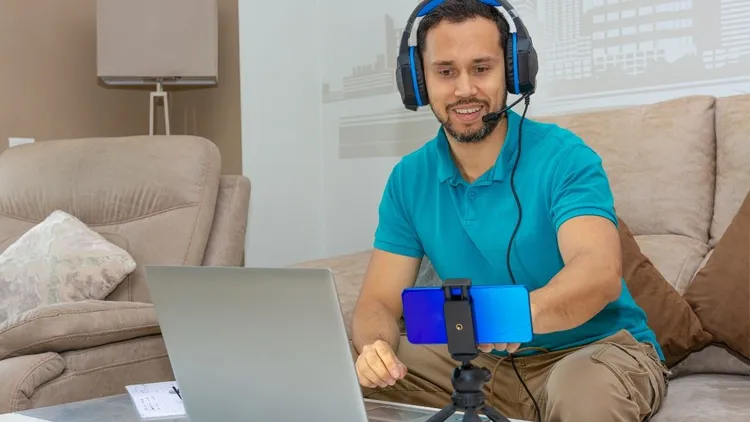

Hey there, curious minds and digital learners! Are you pondering over how much time is needed for an online course? Well, buckle up, because we’re diving into this digital rabbit hole to uncover the mysteries of online course lengths and what makes them tick!
So, you’re ready to create your first online course, or maybe you’re just curious about online learning. Guess what? The answer to “how much time is needed for an online course” isn’t a cookie-cutter, one-size-fits-all kind of deal. It’s more like a “how long is a piece of string” scenario.
Online courses are as diverse as the internet itself. They can range from a quick few hours to a sprawling 20 hours or more. But hold on, what’s considered the most profitable course length? Well, the sweet spot seems to be in the 10-25 hour range, a golden nugget that can potentially rake in around $10,000. Ka-ching!

In the realm of online education, understanding the time it takes for a typical student to complete an online course is crucial for both educators and learners. This article delves into the factors that influence course completion time, whether there is an optimum duration for effective learning, and what time period students should target for a typical course.
The time it takes to complete an online course can vary significantly based on several key factors:
The #1 to make money online with TikTok Search (FREE TRAINING)

While it’s challenging to define an ideal online course length, several educational studies suggest certain principles:

For typical online courses, students should consider the following guidelines:
It’s important for students to balance the desire to complete the course quickly with the need for thorough understanding. Rushing through material can lead to superficial learning, while excessively prolonging a course might reduce motivation and retention.
The time it takes to complete an online course varies based on multiple factors including the nature of the course, the learner’s pace, and their personal circumstances. While there is no universal optimal time frame, students should aim for a balance that allows for deep understanding while maintaining engagement and motivation.
Regular, consistent participation is key to making the most of the online learning experience, regardless of the online course length.

Creating an online course isn’t just about filling time. It’s about packing punchy, valuable content that aligns with your learning objectives. Are you targeting college students or adult learners? Maybe you’re focusing on lifetime learning or helping folks master a specific skill. Each target audience will need a different approach in terms of course length and video content.
For those in the college realm, an online class can span two years for an associate degree or stretch to four for a bachelor’s. This shows that course duration heavily depends on the academic goal. It’s not just about delivering content; it’s about ensuring that content leads to tangible, meaningful outcomes.
Many students are turning to online courses as a viable alternative to traditional in-class sessions at universities or colleges. A major factor is the convenience as well as the cost as many schools will require the extra cost of travel or room and board costs.
In the ever-evolving landscape of online education, both students and course creators play pivotal roles in the successful completion and efficacy of an online course.


The journey of online learning is a collaborative effort between students and course creators. Students must take ownership of their learning, dedicating the necessary time and effort, and actively engaging with the course material.
Course creators, on the other hand, should focus on delivering engaging, relevant, and well-structured content while providing the necessary support and feedback mechanisms. When both parties fulfill their roles effectively, the outcomes of online education can be tremendously rewarding.

Embarking on the journey of creating your own course is an exciting venture. With the right approach and understanding, you can craft a course that is both engaging and informative. Here’s an expanded step-by-step guide to help you determine the ideal course length, tailored to your content and audience.
The foundation of a successful online course lies in a thorough understanding of your audience. Are they professionals seeking to enhance their skills, or students looking for comprehensive learning? Consider factors such as their age, professional background, learning goals, and time availability.
For instance, working professionals might favor concise, focused modules that fit into a busy schedule, while full-time students may prefer more comprehensive, in-depth material. Understanding these nuances will shape not only your course length but also its structure and content delivery style.
The nature and complexity of your subject matter are pivotal in deciding the course length. Ask yourself:
Courses on complex subjects like data science or programming might need extensive time for thorough understanding, while a course on a specific skill like digital photography may be effective even when compact.
The key is to offer maximum value in a time-efficient manner. Focus on creating content that is clear, concise, and directly addresses the learning objectives. Avoid filler material that doesn’t add value. The aim is to ensure that every minute spent by the learner is impactful and contributes to their understanding of the subject.
Understanding the psychological aspects of learning can greatly enhance the effectiveness of your course. Consider the following:
Applying these psychological insights helps in structuring your course in a way that aligns with the natural learning and attention patterns of your audience.
The #1 to make money online with TikTok Search (FREE TRAINING)

Before officially launching your course, conduct a beta test with a select group of your target audience. This provides invaluable insights into how your course is received. Collect feedback on:
This feedback is crucial for fine-tuning your course to better fit the needs and preferences of your students, ensuring that when you do launch, your course is well-received and effective.
Determining the perfect length for your online course is a balance of understanding your audience, the complexity of your content, and the effectiveness of your delivery. By following these expanded steps, you can craft a course that not only educates but also engages and inspires your learners.

The beauty of online courses is their flexibility. Unlike a traditional classroom, an online class allows students to learn at their own pace. This flexibility can be a significant advantage for both course creators and learners.
Online course creators have the unique opportunity to design courses that allow students to complete the material on their own terms. This could mean offering content in bigger chunks for fast learners or in smaller, more digestible pieces for those who need more time.
Forget traditional opinion; online course business is all about innovation. Whether you’re working on your first course or are a seasoned online course creator, there’s always room to try something new and potentially more effective.

In the end, determining how much time is needed for an online course is about understanding your students’ goals, the complexity of your course materials, and the learning objectives you aim to achieve. It’s a balancing act between content depth, student engagement, and market viability.
Remember, whether it’s a quick three-hour tutorial or a several-week-long course, the goal is to create a win-win situation where your students gain knowledge and you, as a creator, feel rewarded both intellectually and financially.
So, there you have it, folks! Embark on your course creation journey with these insights, and don’t forget to trust your gut feeling while considering all these many factors. Happy creating, and may your online course be an enlightening adventure for you and your students!
For more insights and tips, check out these fantastic articles:
And remember, every great online course starts with a great idea and a thoughtful approach to how much time you’ll need to bring it to life. Let’s make learning fun and effective!





